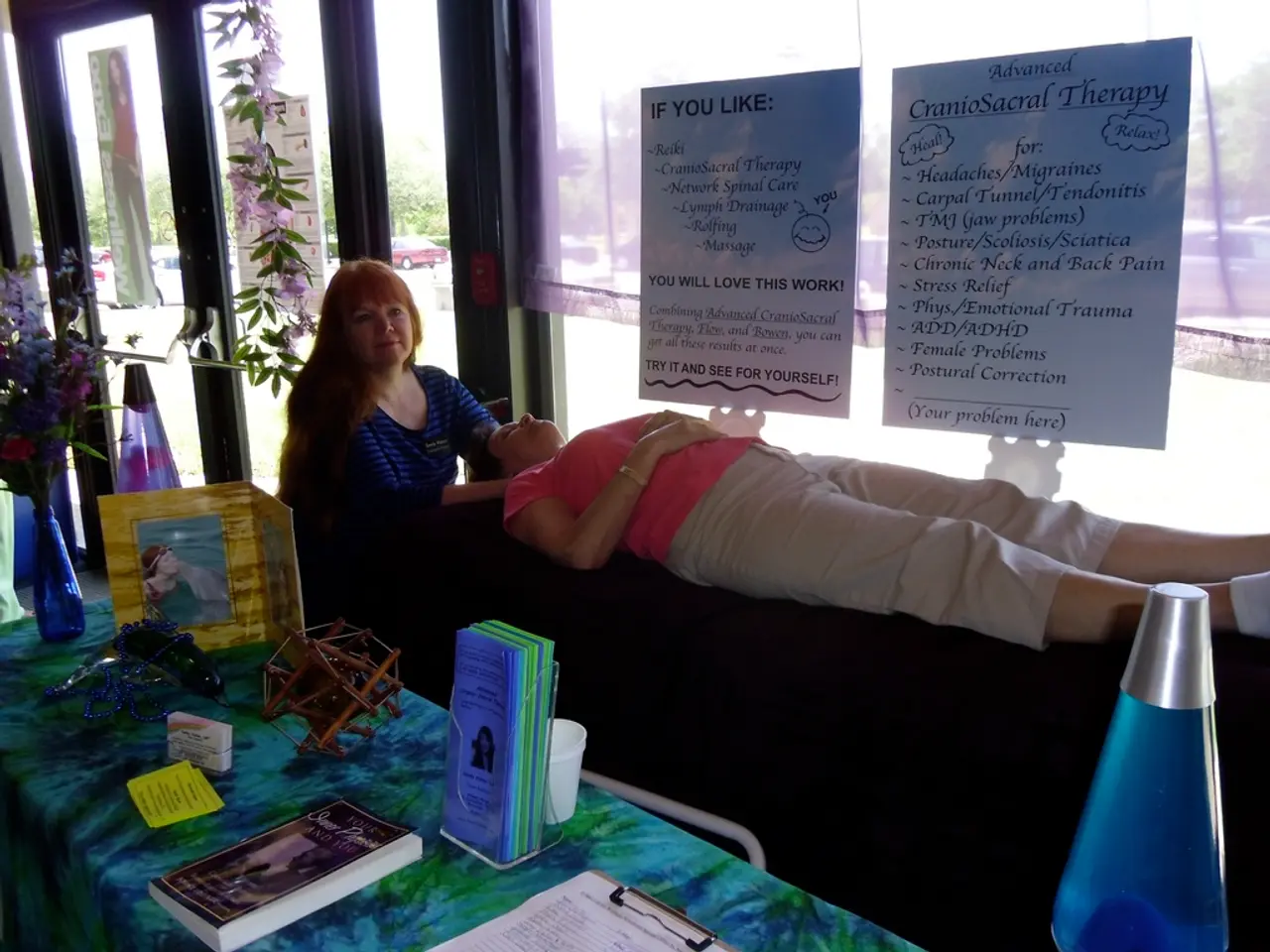Comparing Therapeutic Brain Stimulation (TMS) and Conventional Antidepressants: Choosing the Ideal Depression Treatment
Depression, a complex mental health condition, affects millions of people worldwide, causing intense feelings of despair, hopelessness, and worthlessness. Symptoms range from emotional distress to physical problems like changes in sleep, appetite, and energy levels. Traditional treatments, such as antidepressants, have been effective for many, but they can take weeks to months to show significant improvement and may not be suitable for everyone due to variable response rates and potential side effects.
Enter Transcranial Magnetic Stimulation (TMS), a non-invasive procedure that uses magnetic fields to stimulate nerve cells in the brain. This innovative approach offers an option for those who don't respond to traditional antidepressants.
The Power of TMS
TMS has proven to be effective in treating depression, particularly for those who have not responded well to traditional antidepressants. It has been shown to improve depression symptoms in up to 70% of patients [1][4]. TMS rapidly stimulates brain areas involved in mood regulation, helping to "reset" neural pathways quickly.
A Milder Approach
Compared to traditional antidepressants, TMS is generally well-tolerated with minimal side effects. The most common side effects include mild scalp tingling and occasional low-grade headaches. There are no systemic side effects like those seen with medications [1][2][3].
Navigating Accessibility
Accessibility can vary by location, but TMS is increasingly available in many regions, including in mental health centers and clinics. It requires specialized equipment and trained professionals, which can limit accessibility in some areas. However, it is covered by many insurance plans, including options with $0 copay [1][4].
On the other hand, antidepressants are widely available and can be prescribed by a variety of healthcare professionals. They are typically covered by insurance and can be easily accessed through a pharmacy once prescribed. However, they may require a trial-and-error approach to find the right medication and dosage, which can delay relief [2][4].
Taking the Next Step
The journey to find the right depression treatment can be challenging, and it's essential to consider factors like depression severity, treatment history, lifestyle, and personal preferences. Consulting with a mental health professional is crucial in choosing between TMS and antidepressants.
If you're interested in learning more about TMS or antidepressants, contact us at (844) 867-8444 for a consultation. Take a step towards a brighter, healthier future today.
[1] Mayo Clinic. (2021). Transcranial magnetic stimulation (TMS) for depression. https://www.mayoclinic.org/tests-procedures/tms/about/pac-20395058
[2] National Institute of Mental Health. (2021). Depression. https://www.nimh.nih.gov/health/topics/depression/index.shtml
[3] American Psychiatric Association. (2021). Practice Guideline for the Treatment of Patients With Major Depressive Disorder. https://www.psychiatry.org/psychiatrists/practice/dsm/dsm-5/major-depressive-disorder
[4] National Alliance on Mental Illness. (2021). Transcranial Magnetic Stimulation (TMS). https://www.nami.org/About-NAMI/NAMI-Policy-and-Positions/Issues/Mental-Health-in-the-U-S/Transcranial-Magnetic-Stimulation-(TMS)/Transcranial-Magnetic-Stimulation-(TMS)
- TMS, a non-invasive procedure, has been successful in treating depression, particularly for those who haven't responded well to traditional antidepressants, improving symptoms in up to 70% of patients.
- Unlike traditional antidepressants, TMS is generally well-tolerated with minimal side effects, such as mild scalp tingling and occasional low-grade headaches.
- In the quest for the right depression treatment, exploring treatments like TMS and consulting with mental health professionals is essential, as both have unique advantages and potential challenges in terms of accessibility, effectiveness, and personal preferences.




